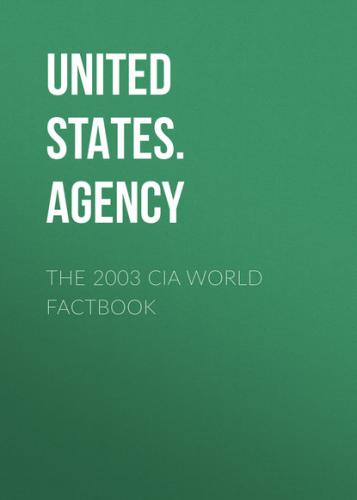GDP:
purchasing power parity - $12.13 billion (2002 est.)
GDP - real growth rate:
12.9% (2002 est.)
GDP - per capita:
purchasing power parity - $3,600 (2002 est.)
GDP - composition by sector: agriculture: 30% industry: 26% services: 44% (2001 est.)
Population below poverty line: 50% (2002 est.)
Household income or consumption by percentage share: lowest 10%: 2.3% highest 10%: 46.2% (1999)
Distribution of family income - Gini index:
44.4 (1996)
Inflation rate (consumer prices):
1.1% (2002 est.)
Labor force:
1.4 million (2001)
Labor force - by occupation:
agriculture 45%, services 30%, industry 25% (2002 est.)
Unemployment rate:
20% (2001 est.)
Budget:
revenues: $402 million
expenditures: $482 million, including capital expenditures of $NA
(2001 est.)
Industries:
metal-cutting machine tools, forging-pressing machines, electric
motors, tires, knitted wear, hosiery, shoes, silk fabric, chemicals,
trucks, instruments, microelectronics, gem cutting, jewelry
manufacturing, software development, food processing, brandy
Industrial production growth rate:
15% (2002 est.)
Electricity - production:
6.479 billion kWh (2001)
Electricity - production by source: fossil fuel: 42.3% hydro: 27% other: 0% (2001) nuclear: 30.7%
Electricity - consumption: 5.784 billion kWh (2001)
Electricity - exports: 704 million kWh; note - exports an unknown quantity to Georgia; includes exports to Nagorno-Karabakh region in Azerbaijan (2001)
Electricity - imports:
463 million kWh; note - imports an unknown quantity from Iran (2001)
Oil - production:
0 bbl/day (2001 est.)
Oil - consumption:
5,700 bbl/day (2001 est.)
Oil - exports:
NA (2001)
Oil - imports:
NA (2001)
Natural gas - production:
0 cu m (2001 est.)
Natural gas - consumption:
1.4 billion cu m (2001 est.)
Natural gas - exports:
0 cu m (2001 est.)
Natural gas - imports:
1.4 billion cu m (2001 est.)
Agriculture - products:
fruit (especially grapes), vegetables; livestock
Exports:
$525 million f.o.b. (2001 est.)
Exports - commodities:
diamonds, mineral products, foodstuffs, energy
Exports - partners:
Belgium 21.5%, Russia 14.6%, Israel 10.3%, Iran 9.4%, US 8.2%,
Switzerland 6.8%, Germany 6.2% (2002)
Imports:
$991 million f.o.b. (2001 est.)
Imports - commodities:
natural gas, petroleum, tobacco products, foodstuffs, diamonds
Imports - partners:
US 15.3%, Russia 12.9%, Belgium 12.3%, Iran 10.3%, UAE 6.3%,
Germany 5.5%, Italy 4.9% (2002)
Debt - external:
$905 million (June 2001)
Economic aid - recipient:
ODA $170 million (2000)
Currency:
dram (AMD)
Currency code:
AMD
Exchange rates:
drams per US dollar - NA (2002), 555.08 (2001), 539.53 (2000),
535.06 (1999), 504.92 (1998)
Fiscal year:
calendar year
Communications Armenia
Telephones - main lines in use:
600,000 (2002)
Telephones - mobile cellular:
50,000 (2002)
Telephone system:
general assessment: system inadequate; now 90% privately owned and
undergoing modernization and expansion
domestic: the majority of subscribers and the most modern equipment
are in Yerevan (this includes paging and mobile cellular service)
international: Yerevan is connected to the Trans-Asia-Europe
fiber-optic cable through Iran; additional international service is
available by microwave radio relay and landline connections to the
other countries of the Commonwealth of Independent States and
through the Moscow international switch and by satellite to the rest
of the world; satellite earth stations - 1 Intelsat (2000)
Radio broadcast stations:
AM 9, FM 6, shortwave 1 (1998)
Radios:
850,000 (1997)
Television broadcast stations:
